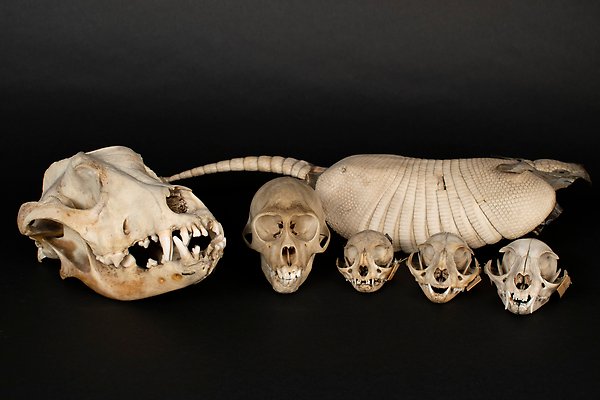The anatomical collection
The anatomical collection contains human mounted skeletons, skulls, pelvises, loose bones and mounted anatomical preparations. In addition, there are plaster copies of skulls, so-called ‘death masks’ in plaster, and other mounted specimens. There is also a small number of animal bones.
Where does the collection come from?
The anatomical collection originated in what was then the Department of Anatomy of Uppsala University. This department was later absorbed into the Department of Cell Biology, which inherited a large part of the collection. In 2011, Gustavianum received part of the collection that had been in the care of the Swedish History Museum in Stockholm. Biological specimens in preservative liquids (so-called wet preparations) that were part of this collection have been transferred from Gustavianum to the Museum of Evolution.

Collection and use
Human remains, animal bones, and plaster casts were collected by the Department of Anatomy from the mid-19th to the early 20th centuries. The material came mainly from archaeological excavations in Sweden, dissections in Uppsala and the Stockholm area, as well as from purchases and donations from private individuals and from various expeditions. During this period, anatomists engaged systematically in the collection, research and exhibition of human remains.
Human remains
Only some of the human remains that were collected by the Department of Anatomy remain in the collection today. We do not know how or when the missing items from the Department of Anatomy disappeared, or where they are today.
A small portion of the present collection consists of human remains from indigenous peoples in Sweden and other parts of the world, as well as a few skulls and skeletons from other countries.
In recent years, Gustavianum has been, and continues to be, an active party in several national and international repatriations of anatomical material.
Read more about the history of Uppsala University
Human remains in the University’s collections: vestiges of a different view of human beings
Read more about Uppsala University's guidelines
Guidelines for the handling and preservation of human remains in the museums of Uppsala University
